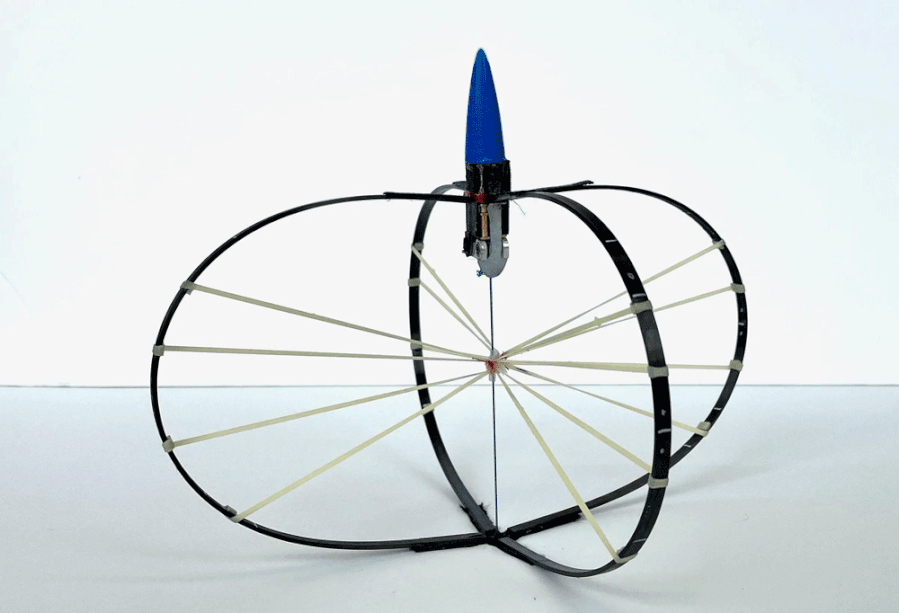At a Height of Over 30 Meters, This Robot Outjumps Nature’s Most Impressive Leapers
Kangaroos, tree frogs, grasshoppers, and robots—what do these four things have in common? While the first three’s similarities may be obvious to some, the fourth addition may scramble the limits of credulity when it comes to placing it firmly in the category of nature’s erstwhile jumpers, leapers, and bounders.
Recently UC Santa Barbara engineers and Disney researchers have created a device which fluidly mimics even the best jumpers in the natural world—a robotic device capable of leaping its way up to 32.9 meters (107.9 feet) in the air.

The distance, which is approximately three times higher than the current jumping record for a robot, is undoubtedly impressive. After all, even nature’s highest jumpers have their limits; certain tree frogs can sometimes leap up to ten times their own height, while the Guinness World Record holding froghopper insect has been known to jump 70 centimeters (28 inches), in the air, accelerating with a mind-bending 13,000 feet per second. However, unlike their wildlife counterparts, robot devices do not have to worry about biological characteristics that limit how far and how often they can jump: pesky limiters like muscle power and stamina do not come into play when dealing with man-made robotic devices.
Last month, the team responsible for this breakthrough bouncer discussed their project in the scientific journal Nature, explaining their inspiration for creating the high-flying hurdler, which was designed with biological jumpers in mind: “…for decades engineers have designed jumping machines that often mimicked or took inspiration from biological jumpers…[however] general analyses are missing that compare [both sets of jumpers] across scale.” Essentially, despite advances in robotic jumpers, scientists have not been able to adequately compare natural jumpers with their manmade counterparts—at least in a meaningful way that allows them to improve upon (and perhaps expand) their natural design.
Until now.
Unlike nature’s skippers, non-biological devices can multiply their jumping prowess with add-ons like ratcheting and rotating mechanisms and other artificial means to store up energy between jumps—an insight which has propelled (pun intended) the team to create their new and improved record-breaker.
The device is comprised of two intersecting carbon fiber legs that are inherently flexible—imagine two very thin wheels overlapping each other, connected by a central ‘spoke’ made of polyethylene that’s reeled in by a small motor. Once released, the built-up energy of the formerly compressed legs causes the robot to rocket an astounding 30 meters in the air.

For their part, the team says “[their] work advances the understanding of jumping and shows a new level of performance” that can be achieved when comparing the essential differences that exist between biological and non-biological jumpers. Additionally, they hint at the possibilities for practical applications, too—such as using the robot for transportation in space.
An engineered robotic device able to jump over 30 meters in the air could potentially quadruple its jumping capabilities on the moon’s surface; launching it into the stratosphere and unlocking unlimited potential for these robots to bridge the gap between earth and its lunar neighbor—a prospect made entirely possible by the humble tree frog and its natural jumping counterparts.




